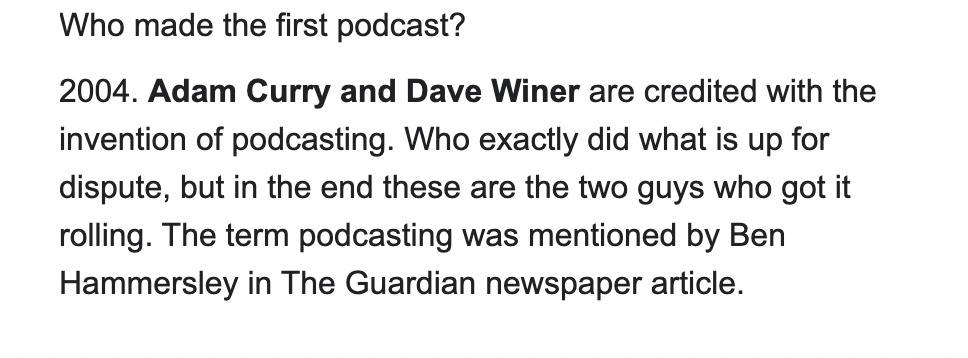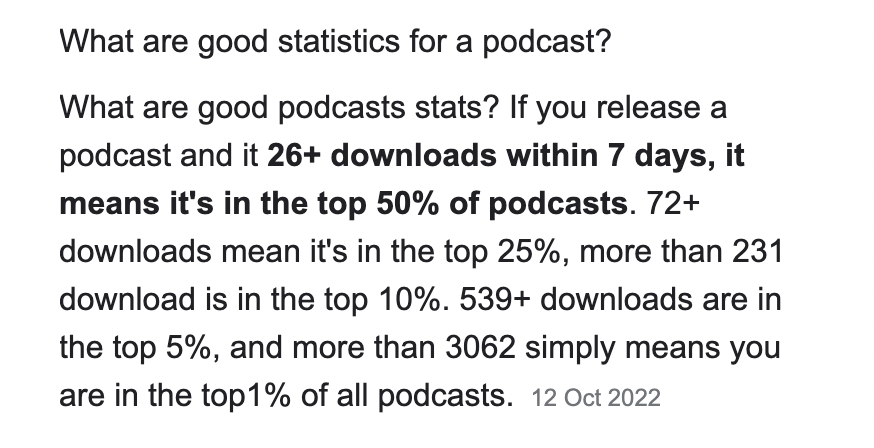Solo podcasts, co hosted podcasts, interviews, panel shows, non fiction narrative story telling, fiction narrative story telling, repurposed content, Hybrid.
Solo podcast: The main advantage of solo podcasts is that you can go at your own pace and do whatever you want because you are only reliant on yourself. As a result, you can devote less time to producing these podcasts. Furthermore, solo podcasts allow listeners to get to know you better.
Co hosted podcasts: You can give genuine reactions on the podcast, and you might even get a few real laughs in. Listeners can always tell whether you’re having a good time, and they’re much more likely to enjoy the podcast if you are.
interviews: Including interviews in your podcast can bring a new perspective to an issue, tell a unique and collaborative story, and teach something new to the listener and host alike.
panel shows: Allow for different perspectives and ideas to be discussed and put into the podcast. It also create a chance for comedy depending on the topic as it’s very open to may people feeding in their ideas a showing their individual way of speaking.

There are only a handful of different audio formats podcasts can appear in for example the Joe Rogan Experience is a MP3 format and this means it’s a sound sequence that is compressed into a very small file. This is so it can be downloaded from Spotify and viewed easily by the common public. On youtube it is an MP4 format. The overall tone is relaxed and talkative. This podcast can consist of the host joe rogan having a casual conversation with either one or two guests about a specific topic. During the podcast Joe rogan uses slang and foul language sometimes even takes drugs and this is because his podcast is known to be a raw and uncut conversation that discuss raw topics. The topics range from aliens, ufos to UFC and sometimes even politics. Joe rogan is known to be completely honest and un filtered and he has received backlash for saying controversial statements that offend certain people. The conversation is often spoken over whiskey and weed. The podcast can be more of interview theme however this depends on the specific guest that is n he show.

Impaulsive is another podcast that has its own reason for being known and famous among the public. Its hosted by Logan Paul, Mike Majlak and George Janko. The impaulsive podcast has 400k listeners world wide making it an extremely popular podcast. Unlike interview podcast format the hosts take specific roles to run the show. Both have their responsibility during the show and sometimes time as well. This type of show needs a bit more equipment and investment but is a little easier to conduct. One person does not have to talk continuously, and the overall show is more conversational and easier on ears. It can also bring out different perspectives on the same topic which helps listeners. The impaulsive podcast’s style is not formal and is a casual conversation between the hosts and specific guests on certain issues. They discuss the latest news and gossip within the influencer community and being influencers themselves the conversation leaves room for a lot of controversial statements and remarks to be made leading to backlash. The tone of the podcast is quite loud and vibrant and the guests and hosts don’t refrain from projecting their voices t match the specific vibe of the content.
History of podcasts


Podcasting has grown drastically and steadily since it began in the early 2000s.
The industry grew alongside the advent of smartphones, smart speakers (Amazon Alexa, Google Home, etc.), and in-dash entertainment systems.In 2022, 62% of the population 12+ has listened to a podcast and roughly 79% are familiar with the seventy three percent of the U.S. population have listened to online audio in the last month and 38% of those ages in the U.S. are monthly podcast listeners. 80 million of Americans are weekly podcast listeners.
88% of Americans own a smartphone.
Smart speaker ownership grew by over 22% during the first year of the pandemic as more people worked from home.
In 2022, 35% of Americans 18+ own a smart speaker.
During Covid, podcasting experienced unprecedented growth, and podcast audiences diversified.
Each week, more Americans listen to podcasts than have Netflix accounts.
Spoken word audio popularity
The consumption of spoken word audio (talk radio, podcasts, audiobooks, and sports) is on the rise across the board. According to Edison Research’s Spoken Word Audio Report, spoken word media consumption has gone up 214% among Gen Z (13-24 year olds) compared to 13-34 year-olds in 2014.
Here are other insights from the report:
- Almost half (46%) of the U.S. population listens to spoken word audio daily.
- Listeners between the ages of 13-24 account for the most growth among spoken word audio listeners.
- Spoken word audio listeners spend 47% of their time with AM/FM radio, 21% with podcasts, 11% with audiobooks, and 21% with other.
Who listens to podcasts?
Historically, podcast demographics have not mirrored the US population. In 2011, 68% of podcast listeners were white, but this is beginning to change.
Here’s the breakdown by ethnicity:
- 57% White
- 13% African American
- 16% Hispanic
- 4% Asian
- 10% Other
The United States accounts for 47.9% of podcast listeners, followed by the United Kingdom with 6.3%, and Canada with 5.0% (full lineup here).
U.S. podcast listener demographics
In years past, U.S. listenership didn’t mirror the population, but that shifted significantly in the last year.
- About half of listeners between ages 35–44 and 22% of listeners 55+ listen on a monthly basis.
- Female listenership reached an all-time high in 2021.
- People ages 12-34 make up 66% of podcast fans within America, and the number of podcast listeners declines as age increases.
- 43% of U.S. men and 39% of U.S. women listen to podcasts.
- Over 66% have a college degree (bachelor’s or higher) and an average annual household income of $75,000 or more.
- Over one-fourth of Americans ages 55+ listen to podcasts monthly.
International podcast statistics
Podcasting is no doubt popular in the U.S., but it doesn’t hold the number one spot for growth or listenership.
- As of 2021, Sweden came in first for watcing podcasts followed by Ireland and Brazil.
- North America and the Asia Pacific have the highest number of listeners.
- 58% of adults in South Korea listen to podcasts every month.
- Most countries see podcasting engagement rise every year.
- As of 2020, 18% of adults in the U.K. listen to podcasts every week.
- 9 million Canadians over 18 years old listen to podcasts every month.
- Nearly 38% of adult Canadians have listened to a podcast in the last year.
- 28% of Canadian listeners have an annual income of $100,000 or more.
- Canada’s podcast audience consists primarily of those ages 18 to 34.
- A little over half of Italians between ages 18 and 34 have listened to a podcast in the last year.
- Music programs are the preferred podcast genre for 45% of Italian listeners, second to news programs.
Proposal